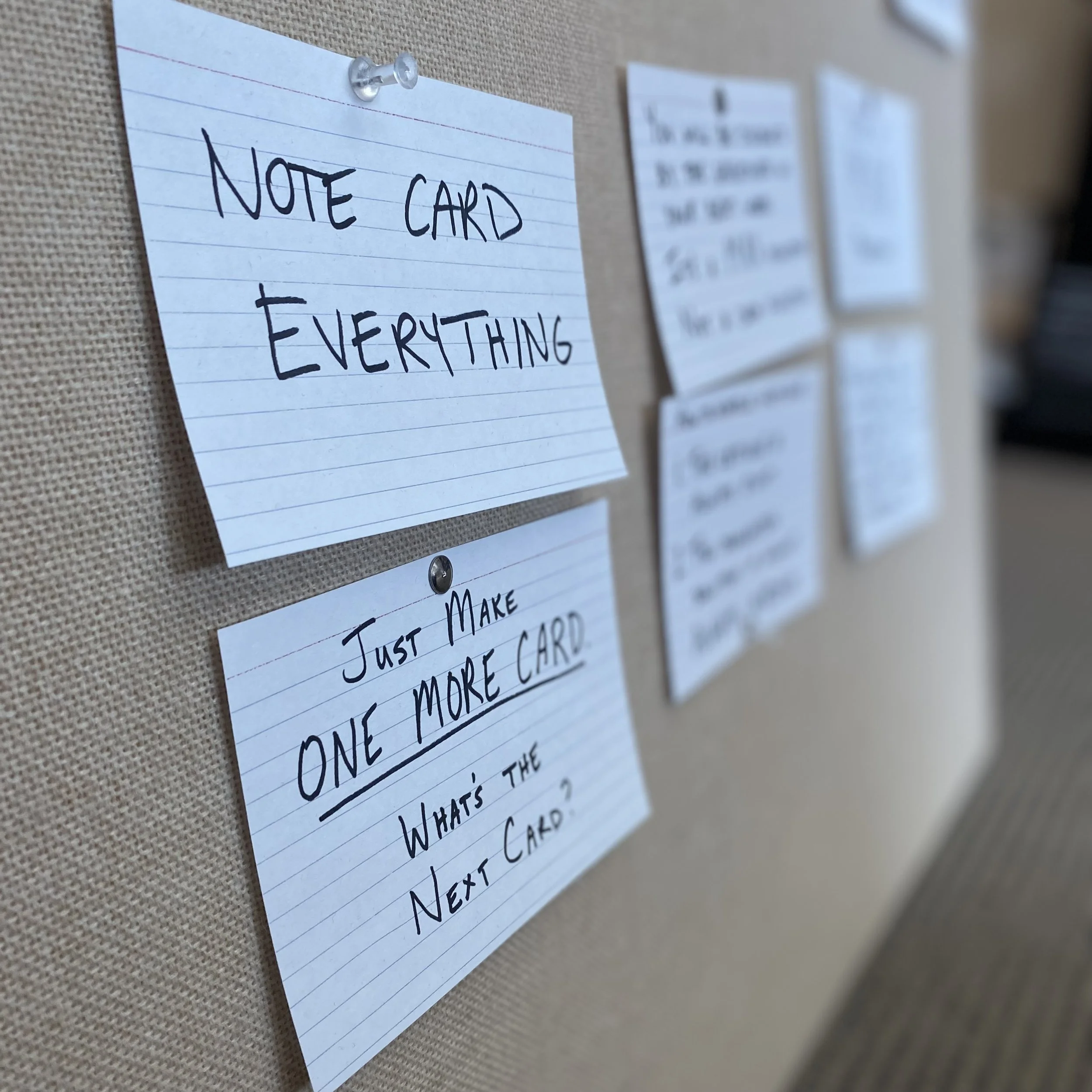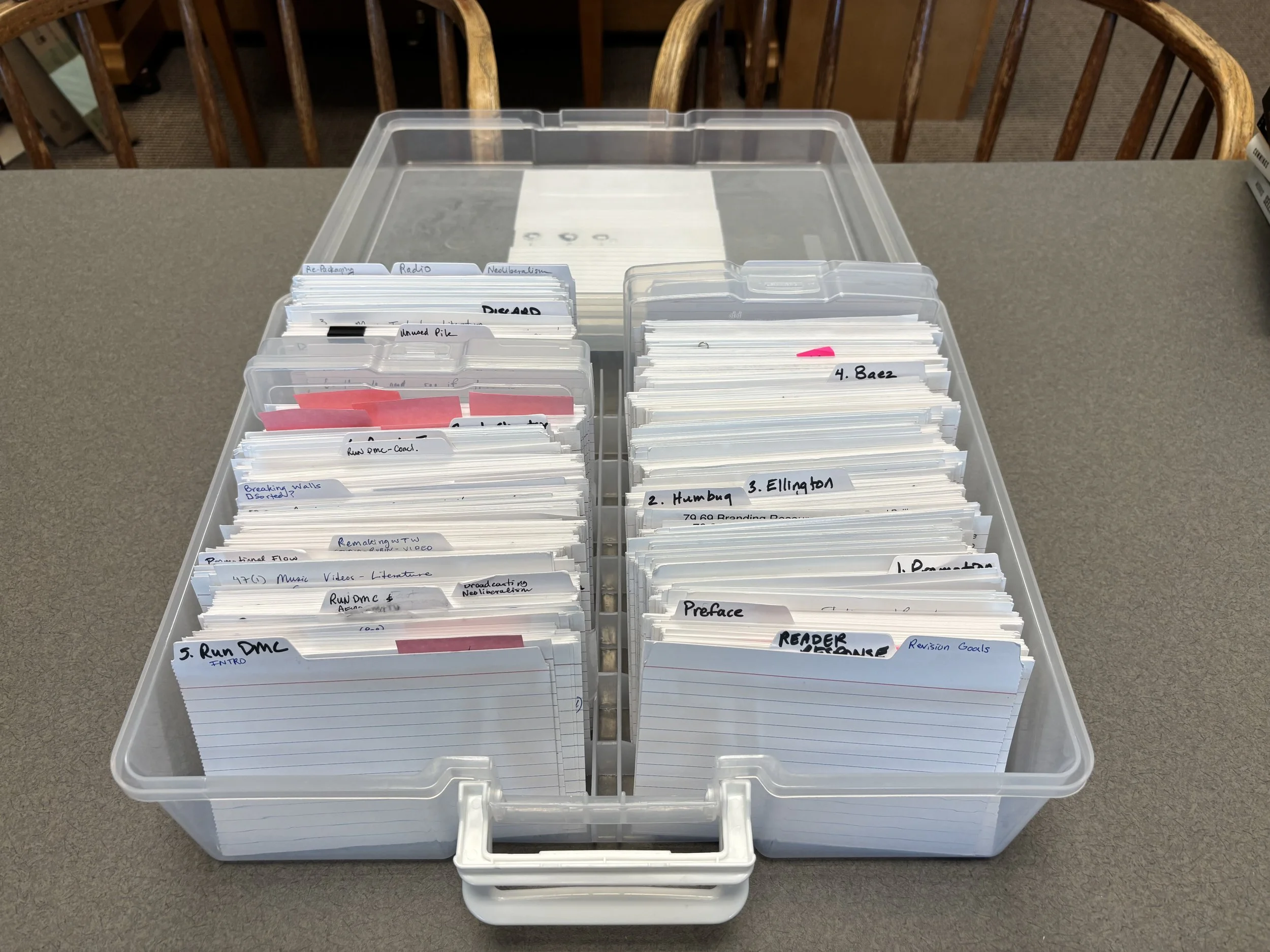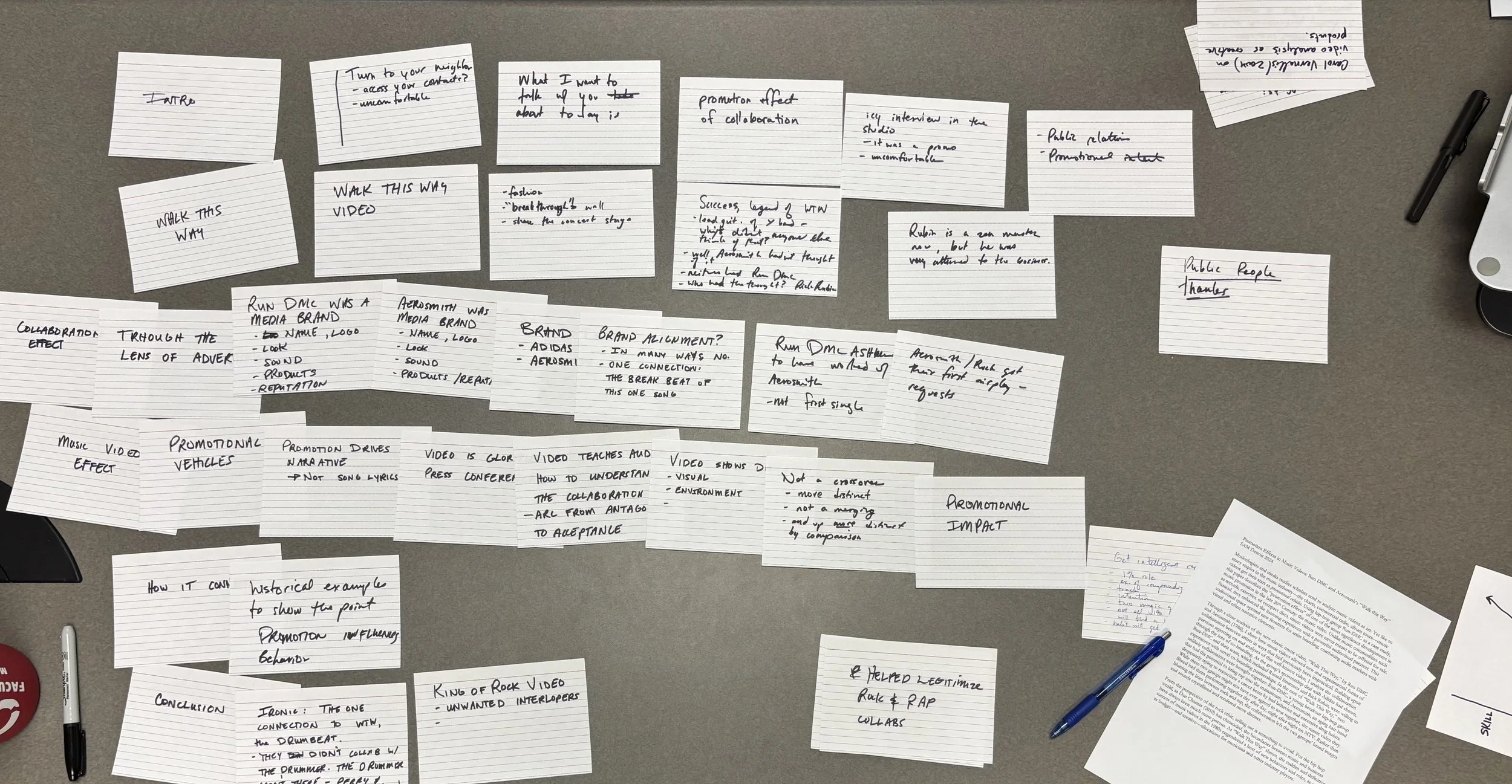My Note Card System: How to Remember and Use What You Read
If you were to visit my office and look around, you might notice my obsession with note cards.
I'm obsessed with note cards.
4x6 inch notecards are seemingly everywhere. In stacks on my desk, more on my shelves. Stuck to the pinboard on my wall. Note cards taped to my computer monitor. A stack of blank note cards is always within arm’s reach.
I get asked every so often about how I do my research, and today I’m going to share with you the most important part of my research system.
It’s how I remember everything I read, how I find it when I need it, and how I transform my thoughts into writing.
It’s my note card system.
Note cards for my book, Sway.
Note cards aren’t just for research. They are for any creative ideas that you want to document and develop. Even if you don’t do research often, you might find that note cards are a creative technology that can be very powerful.
As a part of my research practice, I use 4x6 lined note cards to capture thoughts, information, quotes, ideas, connections, and other elements related to a topic or argument I’m working on. It’s a modified version of the index card method that I learned in 4th grade.
Maybe you learned it too at some point, depending on your age. Or maybe this is brand new for you.
The basic idea is this: every card contains a thought, a quote, a connection, or a reminder. The cards can contain anything, but often are organized around topics that I am interested in. Sometimes the note comes from a source that I am reading (external). Sometimes the note captures my own thought or argument on a topic (internal).
As I research or reflect on a topic, such as a chapter in the book I’m working on now, I write down notes.
It doesn’t matter in what order the notes are written. The organization step comes later. What’s important is that my note cards represent my filtered thoughts on a topic.
Each card has three essential components:
Card title (top left): This is a shorthand reminder of the content of the card as I understood it at the time of creation.
Source information (top right, sometimes underneath the note): this is where I note what source the information comes from, or I indicate that it is my own thought.
Content: This is the place where I put whatever content I want to capture—quotes, lists, dates, sentences, etc. One idea per card.
So as I research, read, or think, I jot down elements that I think might be important or relevant to a topic.
A couple summers ago I was researching a series of publicity manuals that were created for Duke Ellington. As I compared the various versions and make observations, I captured them on my note cards.
For instance, one of the early versions of Ellington’s publicity manuals described Ellington’s music as “primitive,” and my cards track how that word was changed in later versions.
Three note cards on Duke Ellington.
Another common type of card is a quote or summary of another scholar’s work.
I also make “connection” cards (not as often as I should), which are general insights when two or more disparate elements I’ve been thinking about come together for a moment in my mind. The content could really be anything though—titles for chapters, sections, articles; a key word; a diagram; anything.
You could call the process up to this point “note generation.” The next phase is organization. This is where I transcribe the notes into my computer, and organize them into topic clusters.
The killer feature of note cards is the way they can be shuffled into a new organization very easily and quickly. I know that I could do this with purely digital notes as well—and I’ve tried—but there’s just something about holding the cards and moving them around that resonates with me.
Rows of note cards on my desk, in the process of being sorted.
I have decided to take the time to actually transcribe all of my physical note cards also into digital form, which I keep in a notes app. I don’t think the time is wasted, because it helps me review my thoughts and ideas, and distill them as I go.
The system I use takes pieces of others’ systems: a bit from Niklas Luhmann’s Zettelkasten system (keeping all notes in a “slip-box,” numbered and clustered), a bit from Umberto Eco’s How to Write a Thesis (notecard types), some from Robert Greene’s system via Ryan Holiday. Sonkë Ahrens wrote a very helpful book that influenced my approach as well, How to Take Smart Notes. And some approaches are just my own quirks. I should also say that I only use the parts of these systems that I find useful, and I don’t use them as consistently as I should.
But the real payoff for me is when I start to organize ideas into a form to be expressed in writing.
I gather the note into a pile and start to look through them. The sorting process reveals which ideas want to go together.
Solving the puzzle of how to organize my writing.
Note cards dissolve time and space. A note that I wrote last week at my office might give insight on a note that I wrote years ago in a different city.
Sorting also reveals the holes that I didn’t realize remained in my research.
The groupings sometimes lead to a first draft of an outline or core argument.
And sometimes they just make me unhappy, because I didn’t have what I thought I did. But either way, it’s helpful for me to have something to react to, and that helps me know what my next steps are.
Here are some other ways that I use note cards.
Posting reminders on my computer to help me stay focused. A recent one is meant to help me avoid the trap of overplanning. It says: “Planning is not the goal. Drafting is the goal. Minimum effective dose.”
As bookmarks. Note cards are great bookmarks because you can gather notes as you go. (If you want me to explain how I take notes in books, hit reply and let me know. I’ll put it in a future newsletter.)
To take fleeting notes. When I’m doing deep work, I often have sudden realizations about other projects (not the one I’m working on). In order to not get distracted, I jot the note down as quickly as possible, then get back to work. That way, my brain knows that the idea won’t get lost.
Ad hoc to-do lists.
Chapter or section outlines. I sometimes sketch out the outline of a chapter or section to keep in front of my while sorting cards into groups.
First drafts. I like to get drafts started by hand, writing in pencil on a note card. For some reason, it helps me quiet my inner editor and just get the thoughts out. I rarely write the whole draft of a section by hand. At some point, I feel that I’m ready to move to the word processor. I type in the draft up to that point and then continue typing the rest of the section.
I love new apps and tools, but when it comes to remembering what I've read and thought, and using those ideas in my writing, nothing beats this classic technology: physical note cards.




